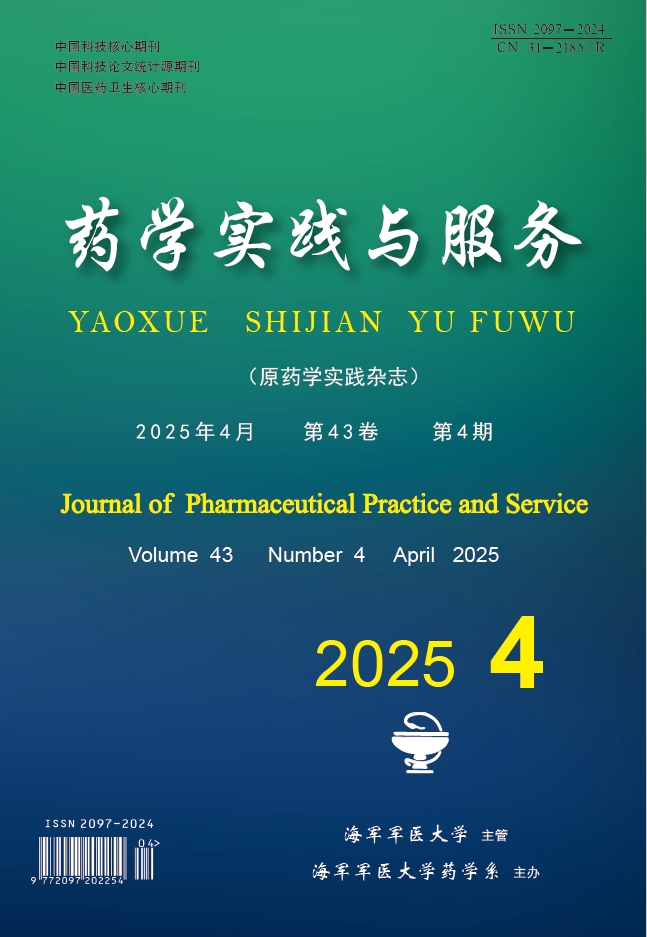2024 Vol. 42, No. 9
Display Method:
2024, 42(9): 365-374.
doi: 10.12206/j.issn.2097-2024.202405026
Abstract:
Remazolam is a new ultra-short-acting benzodiazepine that produces sedation by acting on γ-aminobutyric acid type A(GABAA)receptors. Remazolam has characteristics of rapid onset of action, short half-life, high clearance, and no accumulation in the body. It also has a low incidence of injection pain and mild effects on hepatic and renal function, respiration, and haemodynamics. Additionally, it can be rapidly reversed by flumazenil. The clinical research progress on remazolam in the areas of procedural sedation, induction, and maintenance of general anesthesia were reviewed to provide references for its clinical application.
Remazolam is a new ultra-short-acting benzodiazepine that produces sedation by acting on γ-aminobutyric acid type A(GABAA)receptors. Remazolam has characteristics of rapid onset of action, short half-life, high clearance, and no accumulation in the body. It also has a low incidence of injection pain and mild effects on hepatic and renal function, respiration, and haemodynamics. Additionally, it can be rapidly reversed by flumazenil. The clinical research progress on remazolam in the areas of procedural sedation, induction, and maintenance of general anesthesia were reviewed to provide references for its clinical application.
2024, 42(9): 375-378.
doi: 10.12206/j.issn.2097-2024.202312075
Abstract:
Ferroptosis, discovered in 2012, is a newly form of non-apoptotic and non-necrotic cell death, which is characterized by an increasement in lipid peroxidation and accumulation of intracellular iron ions. Glutathione peroxidase 4(GPX4)is the fourth member of the selenoprotein GPx family and plays a crucial role in clearing lipid peroxides in cells, making it an important regulator of ferroptosis. Small molecule inhibitors targeting GPX4 can induce ferroptosis, offering a new strategy for treating drug-resistant cancers and neurodegenerative diseases. The protein structure and function of GPX4 were primarily discusseed, and the latest advances in small molecule inhibitors of GPX4 were summarized, which provided a research foundation for developing ferroptosis inducers based on GPX4 inhibition.
Ferroptosis, discovered in 2012, is a newly form of non-apoptotic and non-necrotic cell death, which is characterized by an increasement in lipid peroxidation and accumulation of intracellular iron ions. Glutathione peroxidase 4(GPX4)is the fourth member of the selenoprotein GPx family and plays a crucial role in clearing lipid peroxides in cells, making it an important regulator of ferroptosis. Small molecule inhibitors targeting GPX4 can induce ferroptosis, offering a new strategy for treating drug-resistant cancers and neurodegenerative diseases. The protein structure and function of GPX4 were primarily discusseed, and the latest advances in small molecule inhibitors of GPX4 were summarized, which provided a research foundation for developing ferroptosis inducers based on GPX4 inhibition.
2024, 42(9): 379-384, 410.
doi: 10.12206/j.issn.2097-2024.202404062
Abstract:
Objective To improve the cellular uptake efficiency and the therapeutic effect through the structural modification of paclitaxel (PTX) and the preparation of corresponding liposomes. Methods The prodrug of paclitaxel, PTX-PA, was prepared by esterification reaction, and the quantitative detection method of PTX-PA was established. Next,the optimal formulation and preparation of PTX-PA/Lip was obtained through single factor screening based on their appearance, particle size, and encapsulation efficiency. Results The PTX-PA was successfully synthesized, and the established HPLC quantitative analysis method for PTX-PA met the methodological requirements. After the optimal preparation and formulation research through single factor screening, the particle size of optimized PTX-PA/Lip was (62.75±1.81) nm with a PDI of (0.076±0.02), while the drug encapsulation rate reached more than 90%. Conclusion This research successfully prepared palmitic acid modified paclitaxel liposomes based on nanotechnology, enhancing the drug delivery efficiency of paclitaxel and laying the foundation for the pharmacodynamics research of PTX-PA.
2024, 42(9): 385-388, 398.
doi: 10.12206/j.issn.2097-2024.202308045
Abstract:
Objective Hand-foot syndrome is a dose-limiting toxicity of capecitabine. At present, there is no unified gold standard for the establishment of hand-foot syndrome model. To induce hand-foot syndrome and provide a reference for the establishment of hand-foot syndrome model by administering capecitabine in ICR mice. Methods 42 male ICR mice were randomly divided into control group (6 mice) and experimental group (36 mice). The experimental group was given capecitabine (275 mg/kg, twice/d) by intragastric administration for two weeks, and the control group was given 0.5% CMC-Na (4 ml/kg, twice/d), to evaluate whether the animal model of hand-foot syndrome was successfully constructed through H&E staining of mouse foot skin samples and observe morphological changes and the characteristic appearance of mouse foot skin. After the experiment, the mice were sacrificed, and plasma was collected to quantify the concentrations of capecitabine and metabolites. Results Control mice did not showed symptoms of hand-foot syndrome. The skin of the feet of 19 mice in the experimental group showed symptoms such as erythema and swelling, and H&E staining results showed that the plantar skin angular epidermis was thickened, and part of the keratin was exfoliated and damaged, which was considered to be hand-foot syndrome. There were no significant differences in the concentrations of capecitabine and its metabolites between mice with and without hand-foot syndrome. Conclusion The model of hand-foot syndrome induced by capecitabine in mice was successfully established. Differences in exposure levels of capecitabine and metabolites may not be the cause of hand-foot syndrome.
2024, 42(9): 389-398.
doi: 10.12206/j.issn.2097-2024.202404096
Abstract:
Objective To investigate the therapeutic effect of Qiwei Zhigan prescription on two classic animal models of non-alcoholic steatohepatitis(NASH). Methods Methionine-choline-deficient(MCD)rat model and choline-deficient, L-amino acid-defined, high-fat and high cholesterol diet(CDAHFHC)mouse model were used. 48 rats and 96 mice were randomly divided into 6 groups: control group, model group, Qiwei Zhigan prescription group(low, medium and high dose group), positive drug group. After 2 weeks of modeling, the drugs were administrated continuously for 28 days. The efficacy of Qiwei Zhigan prescription in the treatment of non-alcoholic steatohepatitis was evaluated by detecting the serum liver function, blood lipid biochemical index and liver tissue lipid levels of each group of animals, as well as by evaluating the liver histopathological changes. Results The gross anatomical morphology of the liver was improved by Qiwei Zhigan after oral administration of clinical equivalent dose or higher doses in two experimental animal models. The liver weight and liver index of NASH mice were reduced by the prescription. The levels of ALT, ALP and LDH in serum of NASH rats were decreased, and the level of HDL was increased. The levels of ALT, AST, TBIL, ALP, LDH and TG in serum of NASH mice were decreased, and the content of TG in liver was also decreased. The pathological damage of liver tissue was ameliorated, the inflammation of liver tissue was reduced, as well as the degree of ballooning of liver cells and the NAS score of the liver, and there was a certain dose-effect relationship between the groups; the proliferation of collagen fibers in the hepatic lobules and around the portal area of NASH mice was significantly reduced; the density of positive cells labeled by F4/80 was decreased, and the activation of Kupffer cells was alleviated. Conclusion Qiwei Zhigan prescription could effectively ameliorate the progression of two classic NASH models, and decrease the development trend from liver inflammation to liver fibrosis in NASH.
2024, 42(9): 399-401, 406.
doi: 10.12206/j.issn.2097-2024.202404063
Abstract:
Objective To establish a high-precision and high-specificity quantitative nuclear magnetic resonance phosphorus spectrometry method(31P-qNMR)for detecting the phosphorus content in calcium hydrogen phosphate chewable tablets. Methods Hexamethyl phosphoramide was used as an internal standard, phosphorus spectrum data of calcium hydrogen phosphate chewable tablets solution was collected. The linear relationship of calcium hydrogen phosphate within the concentration range of 1.0 to 9.0 mg/ml was studied, and sample recovery rate and repeatability experiments were conducted. Results Calcium hydrogen phosphate and the internal standard demonstrated a good linear relationship within the concentration range of 1.0 to 9.0 mg/ml, with a regression equation A = 0.0043 + 0.1836 C. The recovery rates for low, medium, and high concentrations were 98.0%, 98.1%, and 98.4%, respectively, with relative standard deviations(RSD)of 0.31%, 0.68%, and 0.62%, respectively(n= 9). The average content of calcium hydrogen phosphate in the chewable tablets was determined to be 98.1%. Conclusion This study successfully established a high-precision and highly specific method for quantifying the content of calcium hydrogen phosphate in chewable tablets, which did not require a self-reference substance, was simple in sample preparation, and had a fast detection speed. The method could provide a new technical support for the quality control of phosphorus-containing drugs.
2024, 42(9): 402-406.
doi: 10.12206/j.issn.2097-2024.202403030
Abstract:
Objective To develop a high performance liquid chromatography-tandem mass spectrometry (HPLC-MS/MS) method for simultaneous determination of five flavonoids in Ganmao’an granules (GMA). Methods Chromatographic separation was achieved on a Kromasil C18 Column (150 mm× 4.6 mm,5 μm,100 Å), which was eluted with methanol (A)-0.1 % formic acid (B) at the flow rate of 1.0 ml/min. The gradient condition was as follows: 0-20 min, 35% A, and 20-40 min, 45% A. The column temperature was 25 °C. Analytes were detected using a triple quadrupole tandem mass spectrometer equipped with an electrospray ionization source in the negative ion scanning. The multiple reaction monitoring mode was used for qualitative analysis. For each flavonoid, two precursor ion/product ion transitions were chosen: lutin m/z 609.1→300.1, hyperin and isoquercitrin m/z 463.0→300.1, quercetin m/z 301.0→151.0, luteolin m/z 285.0→132.9. Results Five flavonoids showed the good relationships within their own concentration ranges (correlation coefficient r>0.999 1), whose average recoveries were in the range of 100.63 %-102.81 % with RSDs of 0.67 %-2.07 %. The content results of rutin, hyperoside, isoquercetin, quercetin, and luteolin in 10 batches of GMA were 32.23-479.83, 0.291-1.825, 11.44-20.54, 6.32-18.41, 3.46-6.51 μg/g, respectively. Conclusion The results indicated that the developed method was sensitive, accurate and could provide excellent specificity for simultaneous determination of five flavonoids in GMA.
2024, 42(9): 407-410.
doi: 10.12206/j.issn.2097-2024.202407037
Abstract:
Objective To investigate the efficacy of oral Danning tablets for bowel preparation for colonoscopy in diabetes mellitus patients. Methods A study was conducted from November 2022 to May 2024, 100 type 2 diabetic patients (aged≥30 years)admitted to endocrinology department in our hospital were selected and scheduled for colonoscopy as research subjects. These patients were randomly divided into two groups: ①A control group (n=50), received 68.56 g of polyethylene glycol electrolyte powder 10 hours before the colonoscopy and an additional 137.12 g six hours before the procedure. ②An experimental group (n=50), in addition to the bowel preparation regimen of the control group, orally took Danning tablets three times daily, five tablets each time, starting two days before the colonoscopy. Results The experimental group had a BBPS score of (7.44±1.03), which was higher than the control group’s BBPS score of (5.58±1.98), P<0.001. In the experimental group, 96% of the bowel preparations were rated as excellent or good (BBPS score≥6), significantly higher than the 58% in the control group (P<0.001). Conclusion In diabetic patients undergoing colonoscopy, oral administration of Danning tablets during bowel preparation could improve bowel cleanliness and significantly enhance the quality of bowel preparation.



 Contribution System
Contribution System Author Login
Author Login Review Login
Review Login Editor Login
Editor Login Reader Login
Reader Login



 News
News